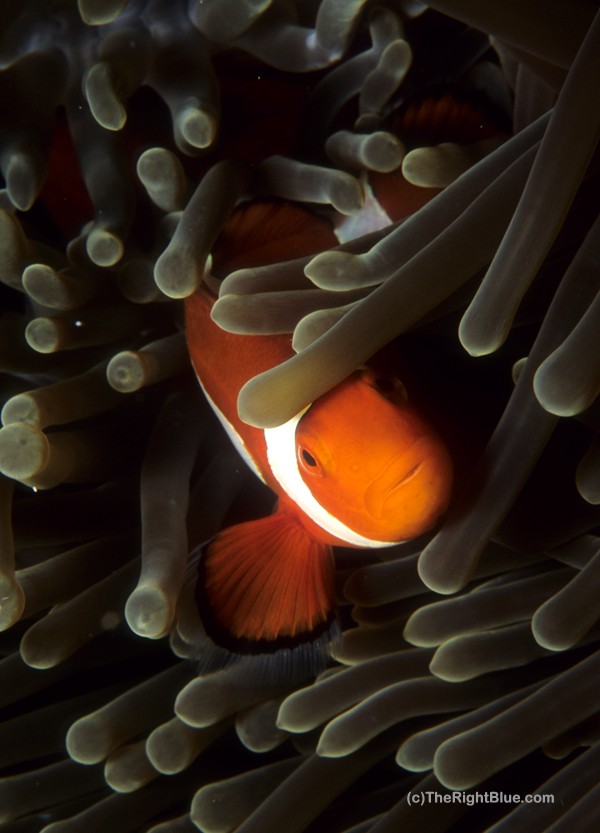by B. N. Sullivan
We see it happen all the time: Tourists go snorkeling -- sometimes for the first time in their lives -- and they are excited by what they see. They decide they want to take pictures of all the pretty fishies and corals to show their friends back home. They buy a waterproof camera, they snap away, and they are sorely disappointed when they see the result. Most of the photos are blurry, and though they thought they were shooting in color, all of the images are monochrome --
blue monochrome.
For quite a few reasons, taking photos underwater is very different than taking photos on land. For one thing, you have to shoot through water, which is a much denser medium than air. The farther away you are from the subject, the less likely it is that you will get a clear, crisp image regardless of which lens you select.
The main difference, though, has to do with light. As sunlight penetrates water, it is gradually absorbed. That is why the deeper you go, the darker it gets. The longer wavelengths -- the reds and yellows -- are absorbed faster than the shorter wavelengths, i.e., the blues and greens. Things look bluer the deeper you dive, because the longer wavelengths are effectively gone.
So, while shooting photos underwater in natural light can produce some nice images, even at very shallow depths in very clear water the result always will be quite monochromatic. You can't fight the laws of physics!
In order to capture colors and details underwater, it is necessary to be as close as possible to the subject and to use strobes (flash) to light it. Here are some examples of sea turtle photos that will illustrate the above points.
BNSullivan.jpg) |
| Green Sea Turtle -- natural light at about 8 meters depth |
This first image is a typical natural light photo at relatively shallow depth -- the blue monochrome effect. It happened by mistake when my camera strobes failed to fire as I pressed the shutter release. Pictured is a rather elderly Green Sea Turtle (
Chelonia mydas) with a Remora (
Remora sp.) -- AKA "shark-sucker"-- attached to its carapace. The photo was taken at Pulau Sipadan, Malaysia.
 |
| Green Sea Turtle -- natural light at about 2 meters depth |
The second image also was shot in natural light, but just below the surface and at very close range. This Green Sea Turtle passed right beside me just as I began my descent from the surface, and I had no time to do anything but aim and shoot. Since the turtle was so close to me and we were barely two meters deep, the details were captured reasonably well (including that gunk on the carapace). Notice, though, that the background is quite blurry and blue. This image was shot in Hawaii.
BNSullivan.jpg) |
| Green Sea Turtle -- lit with a single strobe |
In the final example, another Green Sea Turtle at Pulau Sipadan was lit with a single strobe from the right side of the frame. The colors in the carapace and the markings on the turtle are well captured, and the soft and hard corals in the foreground are well defined. The fishes in the more distant background are fuzzy, which is typical for this kind of shot.
Note: An earlier version of this article was published in 2009 in Photosynthesis on ScienceBlogs.com.
BNSullivan.jpg)

BNSullivan.jpg)
BNSullivan.jpg)
BNSullivan.jpg)
BNSullivan.jpg)
BNSullivan.jpg)
BNSullivan.jpg)

BNSullivan.jpg)
BNSullivan.jpg)
BNSullivan.jpg)
BNSullivan.jpg)
BNSullivan.jpg)
BNSullivan.jpg)
BNSullivan.jpg)
BNSullivan.jpg)

BNSullivan.jpg)
BNSullivan.jpg)
BNSullivan.jpg)
BNSullivan.jpg)
BNSullivan.jpg)
BNSullivan.jpg)

BNSullivan.jpg)
BNSullivan.jpg)

